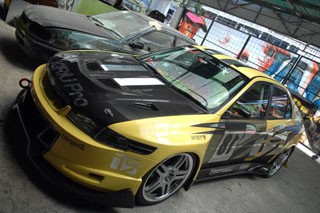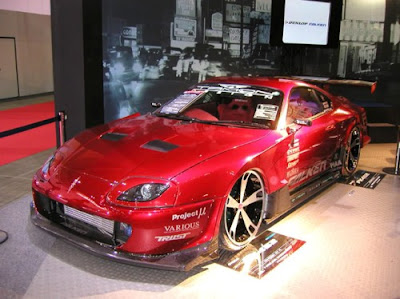
I want to be upfront about something: I'm not an American, I'm an Australian. And as such, I don't really understand NASCAR or baseball, and my daily driver is from a country that the Americans were at war with seventy years ago. Heck, I sometimes even eat croissants.
 So what gives me the right to chide American drivers for resisting such a basic piece of road design as the humble roundabout? Well, that's simple: in Australia we've been using roundabouts for years.
So what gives me the right to chide American drivers for resisting such a basic piece of road design as the humble roundabout? Well, that's simple: in Australia we've been using roundabouts for years.
The New York Times reports that, for some oddball reason (probably because the French are so fond of them), Americans are actively resisting the introduction of the roundabout across their great, proud nation. This comes despite the fact that roundabouts have long proven to be safer, more efficient and better for the environment than that other piece of road design: the intersection.
Eugene R. Russell Sr, a civil engineering professor at Kansas State and the chairman of a national task force on roundabouts, elaborates:
"There's a lot of what I call irrational opposition. People don't understand. They just don't understand roundabouts."
What's to understand? It's a big concrete circle that you drive around counter-clockwise, turning off on the exit that you want. If you're turning left or making a U-turn, you keep to the inside lane, if you're turning right, you keep to the outside lane. You give way to the left like you would at an intersection, and to any vehicles already transversing the roundabout. That's it.
So why don't Americans like roundabouts?
Well, there are a few potential reasons. First, there's the resistance to change: intersections have been a staple of American towns for at least sixty years. There's also some confusion between what a roundabout actually is: traffic circles, like Dupont Circle in Washington D.C., are not roundabouts. Roundabouts are typically smaller, traffic moves more slowly and do not feature traffic lights.
There are, however, signs that attitudes are changing. The Insurance Institute for Highway Safety interviewed 1,802 drivers across six communities and found that just 34% support roundabouts before construction, but that this generally increases to 57% shortly after construction was finished and 69% after more than a year had passed.
There are roughly 2,000 roundabouts across the United States, most of which were built in the last ten years according to Edward Myers, the senior principal at transport engineering firm Kittelson and Associates. Hundreds more are planned for the immediate future, so it seems American drivers will have no choice but to go accustomed to, and learn how to use, these rotary roadways.
By Tristan Hankins
Source: NYT , Photo/Video: Federal Highway Administration (FHWA)
_______________________________VIDEO_______________________________


















